

Inside this Issue: Honoring an Unsung Hero Lead from Where You Are Quantifying the Value of Nursing Practice Healing the Healer Addressing Wellness and Mental Health Nursing Workforce Crisis:
Managing Editor and Writer
Michael Grossenbacher | mgrossenbacher@ ncsbn.org
Contributing Editor and Writer
Dawn Kappel | dkappel@ncsbn.org
Graphic Designer
Kalona Owens | kowens@ncsbn.org

Founded March 15, 1978, as an independent not-forprofit organization, NCSBN was initially created to lessen the burdens of state governments and bring together nursing regulatory bodies (NRBs) to act and counsel together on matters of common interest. It has evolved into one of the leading voices of regulation across the world.
NCSBN’s membership is comprised of the NRBs in the 50 states, the District of Columbia, and four U.S. territories — American Samoa, Guam, Northern Mariana Islands and the Virgin Islands. There are seven exam user members and 23 associate members that are either NRBs or empowered regulatory authorities from other countries or territories.
Mission: NCSBN empowers and supports nursing regulators in their mandate to protect the public.
The statements and opinions expressed are those of NCSBN and not the individual member state or territorial boards of nursing.
Copyright ©2023 National Council of State Boards of Nursing, Inc. (NCSBN) All rights reserved. This document may not be used, reproduced or disseminated to any third party without written permission from NCSBN.
Address inquiries in writing to NCSBN Permissions, 111 E. Wacker Drive, Suite 2900, Chicago, IL 60601-4277. 312.525.3600 | ncsbn.org | infocus@ncsbn.org


2024, Vol. 1 | 3 In This Issue 2024, Vol. 1 Honoring an Unsung Hero .............................................................. 4 Suzanne Hunt Has Served the Nurses and Patients of Tennessee for More Than 50 Years Lead from Where You Are 8 By: Cindy Smith, MN, RN, Executive Director, College of Registered Nurses of Saskatchewan Healing the Healer ............................................................................... 12 Nursing Workforce Crisis: Addressing Wellness and Mental Health Quantifying the Value of Nursing Practice ....................... 24 Speed Round 33
AWARDS

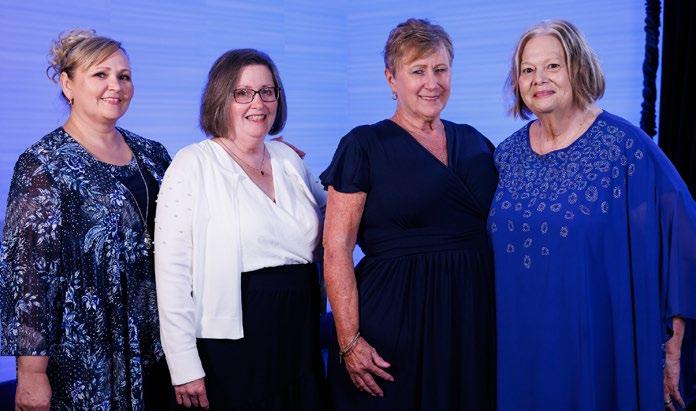

4 | In Focus
Clockwise from the top: Suzanne Hunt and NCSBN President Jay Douglas; Hunt and her husband Richard; Hunt with colleagues TBON Executive Director Sherry Richardson, Nursing Consultant Therese McLean and retired Nursing Consultant Peggy Daniel.
Honoring an Unsung Hero
Suzanne Hunt Has Served the Nurses and Patients of Tennessee for More Than 50 Years
In 1973, the NCLEX® Exam as we know it did not exist, licensure applications were still processed in paper form and interstate licensure had not been established. In 1973, NCSBN did not yet exist. And in 1973, Suzanne Hunt began her tenure at the Tennessee Board of Nursing (TBON). Hunt has witnessed significant change during her career, but her dedication to nurses and patients in Tennessee has never wavered. At the 2023 NCSBN Annual Meeting, she was recognized with the Exceptional Contribution Award, not just for her many years of service, but for being an unsung hero.
NCSBN Awards nominations are submitted with letters of support, and Hunt’s nomination contains glowing accolades. “An expert in credentials review and fraud detection … [her] historical knowledge has repeatedly been called upon when there are questions regarding changes in processes or details long forgotten due to staff changes … this nominee fosters a culture of inquiry, pushes others to do their best work, and helps others prepare for the constant change of regulation.”
She was nominated by Executive Director Sherry Richardson, MSN, RN, and other colleagues at TBON. “I was working from home the day Sherry called me and she asked me if I could join a Teams meeting with Elizabeth Cooper and Therese McLean, both nurse consultants at the board,” recalls Hunt. “Sherry said they had some good news, that they had nominated me for an award from NCSBN and I was chosen to receive the 2023 Exceptional Contribution Award. I just sat there. I didn’t say anything. I was speechless, shocked.
When I did say something, I said, ‘I thought only nurses could receive that award from NCSBN.’” The Exceptional Contribution Award is granted for significant contributions by a member who is not a president or executive officer. Hunt’s contributions have been more than significant. She is the longest serving staff member of a regulatory board. In her time at TBON, she witnessed the inception of NCSBN, NCLEX, electronic licensing systems and countless other changes.
“In my current role as examination coordinator, I oversee the daily operation of processing all RN and LPN applications for NCLEX RN and PN, and I have a staff of three additional administrators,” says Hunt. “When I started with the board in 1973, I was hired to help with the examination, and I also did LPN endorsements, all verifications to other state, name and address changes, and eventually I learned other roles within the board.”
Hunt was instrumental in the adoption of NCLEX and has been involved in all updates. She has seen the exam change dramatically. “I did most of the typing of license, rosters and admission cards for the exam when we started out because everything was done on typewriters,” she explains. “We didn’t have computers. When we changed to state board tests, the exams were paper, and they were given four times a year, so you had to schedule the site to give the exam and order the materials, like test booklets and prep for the exam. Score sheets came in triplicate. We would tear one off with the license that was sent to the applicant and the result and we sent failure packets to those who
2024, Vol. 1 | 5
“
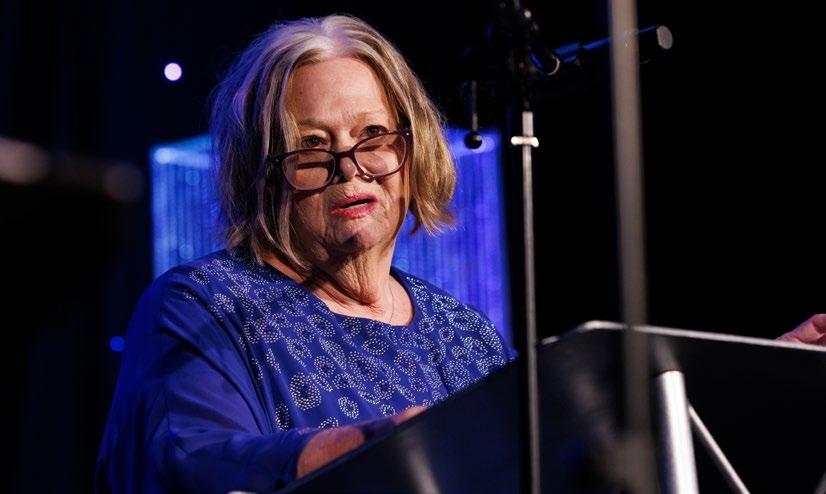
needed to retake. They were all mailed on the same day. We didn’t mail them as we finished them. I usually could type about 100 licenses a day.”
Testing services have changed several times during her tenure. “When we started out, it was the State Board Test School Exam by the National League of Nursing,” she says. “I think the next one was Educational Testing Service, then Sylvan Learning Centers, then McGraw Hill and then Pearson VUE.”
Hunt mentors new staff and leads her team in upholding high standards of communication, consistency and efficiency in meeting requirements for initial licensure. She works with NCSBN and Pearson VUE staff on new initiatives and challenges. Through her knowledge of internal processes and requirements, she was instrumental in TBON’s collaboration with NCSBN to add APRN information to NURSYS®, a project that took several years.
Even though I’m not a nurse, I have dedicated my life to licensing those who want to be nurses and I take great pride in that.
“
— Suzanne Hunt
information webinar for deans, directors and nursing students, providing guidance on the application and testing process. Prior to that, she made in-person presentations to schools of nursing to ensure accuracy of the application process and answered questions pertaining to the role of the regulatory body in conjunction with NCSBN. She confirms the legitimacy of each accommodation request and ensures that testing accommodations are appropriate. She is an integral part of TBON’s self-assessment and quality improvement processes.
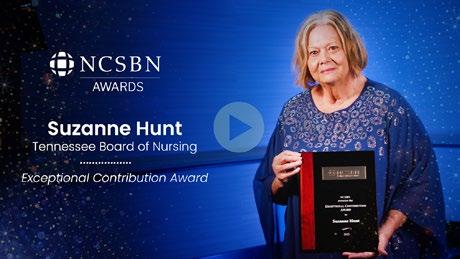
Hunt values being recognized for her hard work over the past 50-plus years. “I just didn’t receive this award by myself,” she says. “I have a great team. It’s their award too. I didn’t know my peers had nominated me and I would encourage other boards to nominate staff members like myself, so that they can be in shock like I was!”
Currently, Hunt co-hosts a twice-yearly online
“We’re a relatively small team, with about 20 of us total,” says Richardson. “I believe this was a real morale booster, for people who are in similar positions to Suzanne, who serve such an important
6 | In Focus continued from page 5
Watch Suzanne speak about the Exceptional Contribution Award and what it means to her.
purpose but don’t get to attend the ceremonies. It was important for them to see that it’s not just the folks who have master’s and doctoral degrees. It’s good to see that the people who are the unsung heroes, who come into work every day and help protect the public, they too can be recognized.”
Hunt was honored to receive the award in Chicago among colleagues and with her husband. Peggy Daniel, a now-retired nurse consultant who worked closely with Hunt, paid for her own flight to Chicago to attend the awards dinner and express her support. “That’s just a little piece of how important Suzanne and her work are to our organization,” says Richardson. “And it shows how much she has touched the lives of folks here, as well as all the nurses she’s helped license over the last 51 years now.”
“At the Awards ceremony I was sitting back at our table, and I kept telling Sherry after each one of the three awardees went up, ‘Nope, I’m not making my speech. I’ll just accept the award, and that will be it,” Hunt recalls. “I was nervous because the speech I prepared was not like their speeches, and the work I do is not like their work. And then they called my name, and I thought, ‘Well, I’ll take the speech with me, but I don’t know if I’ll do it.’ I was always the kid who sat in the back of the room when it was time to do book reports in front of the class. I was hoping the bell would ring before my time, but I knew there wasn’t going to be a bell.”
Hunt did give her speech. “I was nervous. I never looked up as I read my speech. I said that even though I’m not a nurse, I have dedicated my life to licensing those who want to be nurses and I take great pride in that. When I finished, I looked up and I was very surprised to see that I had received a standing ovation.”
AWARDS
In the world of nursing regulation, Every Moment Matters. Your countless moments of dedication, innovation and excellence protect the public, ensure the highest standards of care and advance our profession. Someone you know is setting an example for others. This is your opportunity to celebrate their outstanding achievements! Your nominations do more than celebrate and inspire regulatory excellence, they help us realize lasting impact.


Award Submission Deadline: March 22 Nominate Today
Visit the
(NCSBN member login required) for informative tools
guidance on preparing
compelling
nomination, and
chance to watch videos
previous
Awards Program webpage
and
a
awards
the
of
awardees.
Lead from Where You Are
 By Cindy Smith, MN, RN, Executive Director, College of Registered Nurses of Saskatchewan
By Cindy Smith, MN, RN, Executive Director, College of Registered Nurses of Saskatchewan
I have been in formal leadership positions for 25 years of my nursing career, but even in other roles I have always considered myself a leader. I believe that leadership is the process of influencing others, based on a foundation of respect. To be a nurse leader requires collaboration and effective communication. It means being a role model and mentor, and involves supporting change, advocating for quality care and taking risks when necessary.
The past, present and future of nursing lies in our leadership capabilities—not only at the management level but in all roles. I encourage registered nurses (RNs) in all domains of practice, and at all levels of experience and expertise, to maximize their leadership potential. As a key competency within the RN scope of practice, leadership is important to achieving excellent patient and client care, and to the long-term progression of the profession.
The link between nursing leadership and patient outcomes is clear. Research evidence has revealed the importance of nursing leadership in health care, linking it to patient mortality, quality of patient care and satisfaction, and improved staff well-being/morale. In my leadership roles, I have been privileged to work with health care teams and given a tremendous opportunity to influence.
I will share my approach to leadership that I strive to inspire in student nurses, new graduates and all nurses. In my view, leadership is an action, not a role. Therefore, I challenge nurses to “Lead from where you are.”

Pathways to Leadership | Members of NCSBN’s Leadership Succession Committee Share their Journey
Smith
8 | In Focus
Joe Sanfelippo, PhD, MS, an author, veteran principal and superintendent, wrote about this concept. At the time, he focused on growing leadership potential across the community, from students to teachers to staff. This concept resonated with me as a notion I believe in and have harnessed throughout my nursing career.
The message I convey is that as a nurse, you can make a real impact in your workplace by leading from wherever you are. You can inspire others and create positive change by stepping up and showing initiative. The following approaches contribute to making an impact:
• Understand your influence
• Challenge the status quo
• Believe you can make a difference
• Raise the bar and desire to do better every day
• Support your colleagues to do the same
• Pursue lifelong learning
Individually, the concept of leading from where you are begins with understanding the influence you have. Nurses often underestimate their power. As the largest health profession, nurses are key to identifying areas that need attention and they can advocate for change by helping others understand the problem. Nurses are recognized experts who can contribute to effective decision making or policy development by sharing their expertise, based on research and data. Nurses

must challenge the status quo and ask questions. When done with positive intention, nurses can work together to solve the most difficult problems and create innovative and constructive changes in organizations.
Along with understanding their influence, nurses need to believe they can make a difference. When nurses believe they can improve a situation in an important way, they will create positive change. Nurses are motivated by knowing they have positively impacted their patients’ lives. This factor is fueled by a desire to make a difference.

To lead from where you are, I challenge individual nurses to raise the bar and desire to do better daily. Setting higher expectations for yourself leads to continuous improvement. Similarly, I encourage nurses to support their colleagues to do the same. Take the time to help, mentor and care for your teammates. Leading from where you are does not only benefit your teammates and colleagues, but most importantly your patients.
As a nurse, continuously improving your skills and knowledge is crucial. Therefore, I strongly urge nurses to adopt a lifelong learning approach. By engaging in practices that contribute to personal and professional growth, they can stay updated with the latest best practices and provide better patient care.
Throughout my career, I have discovered that leading from where you are is incredibly valuable. It has consistently aided me in my nursing career and has proven to be a reliable tool for success.
The members of NCSBN’s Leadership Succession Committee endeavor to provide future, emerging and current leaders with an insider’s look into the value of serving in a NCSBN leadership role. NCSBN members can pursue a variety of leadership paths to support their professional development. Getting involved with NCSBN benefits you both personally and professionally. Find out how to apply for a leadership position (member login required).
2024, Vol. 1 | 9






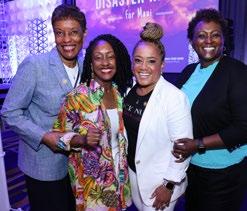

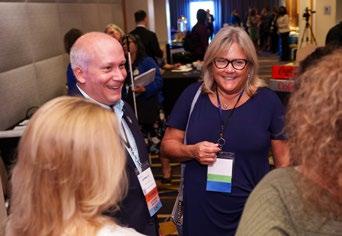

Seize the Moment Advance Your Career NOMINATE TODAY Deadline: March 29, 2024

The NCLEX® Depends on You... Apply to be an Item Writer or Item Reviewer Today Apply Today

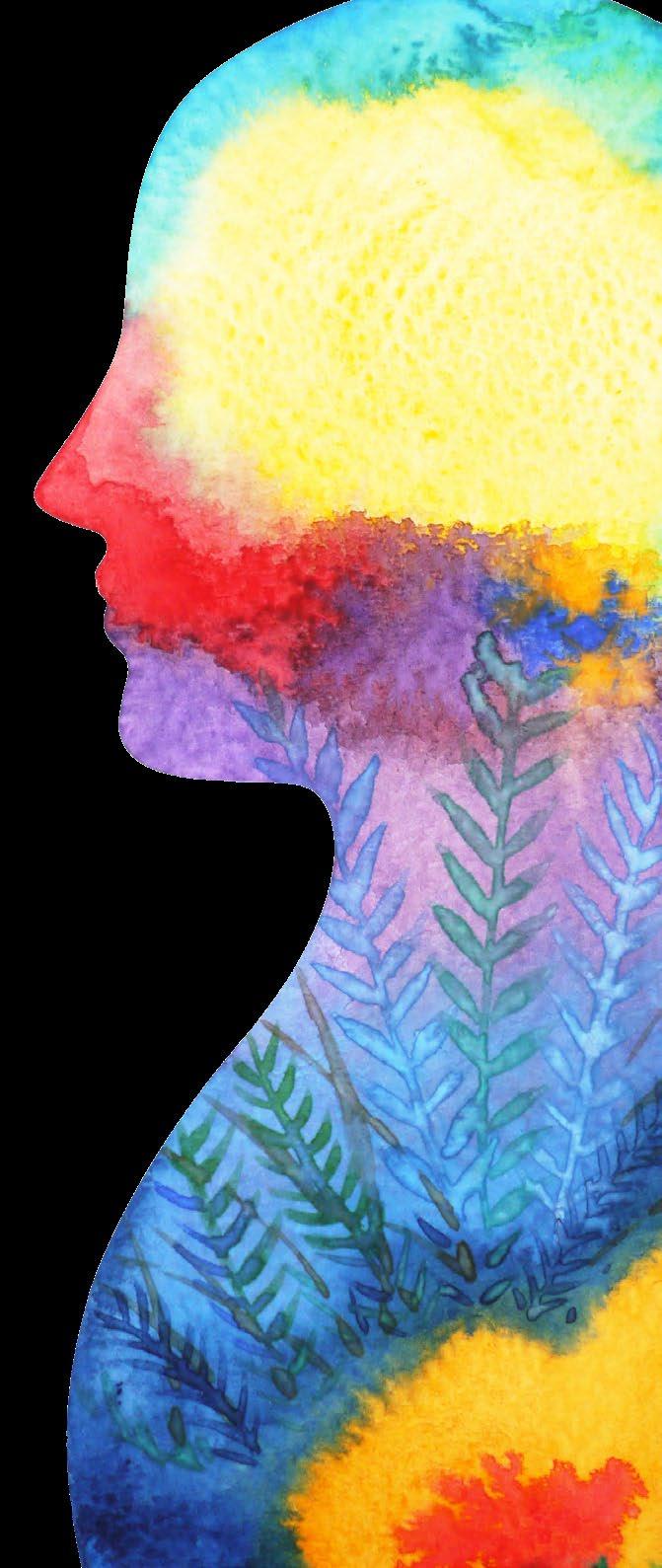


Nursing Workforce Crisis:
Healing the Healer
Addressing Wellness and Mental Health
Many of the people we call heroes share the same characteristics and attributes —sacrifice, bravery, determination, compassion, resilience and selflessness. Firefighters, soldiers, aid workers and nurses are frequently hailed as heroes. While heroes do get the benefit of our praise and admiration, we often romanticize them as almost supernatural beings with superhuman strengths and abilities. We forget that they are quite human and have the same frailties and needs as everyone else.
Nursing has always been a demanding and challenging profession but the COVID-19 pandemic, its aftermath and subsequent ongoing staffing shortages have pushed many nurses to the brink of their physical and psychological endurance. Nurses were upheld as heroes and applauded but little was done to address the stress they endured and are still enduring.
Having this mantle thrust upon them can set up unrealistic expectations that are ultimately detrimental to a nurse’s physical and mental health. They can be caught in the trap of being afraid to show vulnerability and ask for help. Sometimes the healer is the one in need of being healed.
NCSBN’s groundbreaking 2022 National Nursing Workforce Survey brought into focus the crisis surrounding nursing and the intention of almost one-fifth of registered nurses to leave the profession by 2027. This study is considered to be the most comprehensive and only research in existence, uncovering the alarming data points which have far reaching implications for patients and the health care system at large.

continued on page 14
2024, Vol. 1 | 13
Recognizing that U.S. health care ecosystem is at an urgent crossroads that requires health care systems, policymakers, regulators and academic leaders to put in place changes that will spur systemic evolution, NCSBN brought together experts from across the U.S. to participate in an ongoing discussion on solutions to staffing, burnout and the prevention of workplace violence. NCSBN wants these issues to remain at the forefront of the minds of health leaders so evolutional changes can be planned and executed in the near future.
Knowing that this discussion cannot be addressed once and then be silenced, In Focus will take a deeper dive into these critical issues in a series of three feature articles over the next year. These articles will explore the issues of staffing, wellness and the prevention of workplace violence, and will offer solutions that can be replicated or modified by other health care institutions. This conversation is vital to the future of the nursing workforce and the health of the nation.
In this first article we will discuss the issues of wellness and mental health with two of the experts who sat on NCSBN’s “Solutions


Addressing Nursing Workforce Crisis” panel held in November 2023 — Evelyn Poczatek, MBA, director, Strategic Initiatives, RUSH and Rush Wellness; and Victoria Priola, PsyD, a clinical psychologist in private practice at Powers Wellness & Consulting Group.
Burnout is the reason cited for many nurses, not only leaving their jobs but for leaving the nursing profession entirely. NCSBN’s study found that a quarter to half of nurses reported feeling emotionally drained (50.8%), used up (56.4%), fatigued (49.7%), burned out (45.1%), or at the end of the rope (29.4%) “a few times a week” or “every day.”
The word burnout was first coined in the 1970s by American psychologist Herbert Freudenberger, PhD, to describe the “consequences of severe stress and high ideals in ‘helping’ professions.” We turned to our experts to see if they agree with that definition and how they would define the word in 2024. Priola, who specializes in providing mental health care to nurses, explains, “Burnout is significantly different than stress. I think the best way to think about it is on a continuum. We have everyday stress on one side, which is related to navigating difficulties and obstacles of daily life, and then we have burnout on the other. Burnout is the cumulative effect of chronic stress related to negative, complex situations that don’t have clear solutions. It pushes people well beyond their capacity to cope effectively.”
Poczatek adds, “Stress itself isn’t necessarily a bad thing. There’s a type of stress called positive stress that can actually push us over a difficult challenge, maybe an all nighter in school or an intense moment driving. That type of stress can actually help us to achieve something we couldn’t otherwise. Stress turns into something negative when it’s ongoing –becoming toxic stress. Toxic stress is what causes burnout.”
Burnout may eventually cause a nurse to leave the bedside, but while they stay their own health and the welfare of their patients may be at risk. Burnout may manifest in exhaustion, lack of concentration, insomnia, negativity, a lack of focus and depression. In extreme cases, burnout can also lead to suicide ideation. All of which have the potential to impact patient care.
Data from the Centers for Disease Control and Prevention National Violent Death Reporting System, found that between 2007 and 2018, nurses were 18% more likely to die from suicide than the general population. Among female nurses, the risk of death by suicide was nearly twice the risk observed in the general population, and 70% more likely than female physicians (Davis, et. al, 2021). The most recent study published
14 | In Focus
Poczatek
Priola
continued from page 13
September 2023 in JAMA looked at “a nationally representative group of more than 1.8 million adults ages 26 and older in data that spanned from 2008 through 2019” and found that an “analysis of the data showed that health care support workers, registered nurses and health technicians were more likely than nonhealth care workers to die by suicide. Meanwhile, doctor suicide rates were roughly the same as those in the general population” (Olfson, et. al, 2023).
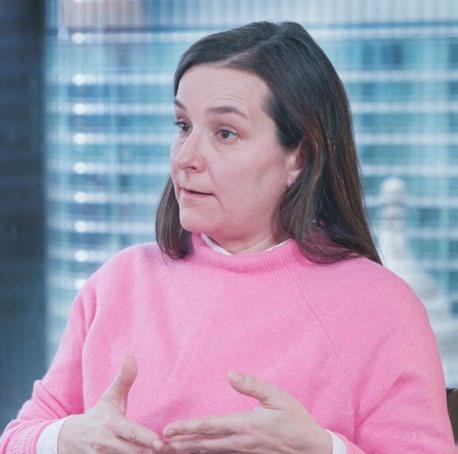
that compromises their own health and well-being.”
It is important to note that neither of these studies include data gathered since the onset of the COVID-19 pandemic. Experts believe that the actual impact of the pandemic on suicide rates may not be known for years as the cumulative effects of burnout and post-traumatic stress disorder (PTSD) are generally not evident immediately and may occur months and years after the “event.”
Priola was the panelist who rather provocatively raised the issue of whether calling nurses heroes might actually be harmful to their mental health, saying, “While calling nurses heroes is a wellmeaning and well-intentioned acknowledgement, I think what’s happened is that it’s created an environment in which people are going into work with the assumption that they’re going to have to be self-sacrificing to a level
I don’t think we should expect nurses to compromise their health, their wellbeing, or their lives in order to be considered good at their jobs.
When asked about her statement for this article, Priola commented that “calling nurses heroes is problematic because it sets up an expectation that they perform heroic behavior as part of their everyday role as a nurse. The reason why I have an issue with that is because they’re not trained to be heroes. They are trained to be health care providers. It’s important that we appreciate this distinction, be aware of the kinds of expectations we set, and what they might mean to each individual nurse. It’s a potentially dangerous scenario.”
— Victoria Priola
“
She also expressed concern that since the dawn of the pandemic, there has been a crossover in the type of language (“war,” “frontline,” etc.) used to describe situations and experiences of those in the military with people who work in health care. “I just want to make sure that people are really clear that those are two very different professions. Military personnel understand that when they sign up for the job, it might cost them their lives. Nurses do not sign up for that, and we shouldn’t expect them to have to risk their lives or their well-being, for that matter, in order to do their jobs effectively,” she notes.
2024, Vol. 1 | 15 continued on page 16
“
“
What is great about well-being, about how humans connect, is that not everything requires a substantial investment in dollars to have a significant impact.

“
— Evelyn Poczatek
Poczatek agrees with Priola’s sentiment, commenting, “I think how many Americans perceive heroes is almost like martyrs. And if we use that term heroes to describe our nurses, then I worry it may be a slippery slope to worsening staff-to-patient ratios, nurses being asked to do overtime without compensation and the expectation that their dedication to their patients is enough compensation and not reward them appropriately for the work that they’re doing.”
While the staffing situation across the nation is precarious and many nurses are under extreme stress, there is hope for the future. Health care systems and other nurse employers are becoming more aware of the role of mental health in not only delivering quality care to patients but also increasing nurse retention and job satisfaction. Aon, a leading global professional services firm, recently conducted a survey of 1,400 hospital across the U.S. and found results that mirror NCSBN’s own workforce study. Aon found that 62% of responding hospitals reported increased turnover among nurses. Additionally, hospitals reported that turnover happens most often among
medical professionals with tenures of one to three years. In response, many health systems have prioritized investment in total rewards and support for workforce resiliency and mental health. The Aon survey found that 57% of reporting institutions are now offering enhanced behavioral health benefits (beyond traditional employee assistance programs or medical plans), which is up from 40% in 2022.
One such innovative program, the Center for Clinical Wellness at Rush University System for Health in Chicago, was launched prior to the COVID-19 pandemic in 2019. It was built on the understanding that health care workers couldn’t continue to thrive and provide excellent care without the institution itself investing in them as people.
The center is self-described as “a healing environment designed for and tailored to Rush employees, students and house staff providing a network of on-site and virtual resources, including free counseling, coaching and other wellnessoriented services.” It was created to foster a
16 | In Focus

culture of wellness and includes programs to address burnout, support resilience and increase joy in work.
Poczatek, the program’s director, says she likes describing Rush Wellness as an initiative because it’s always evolving. She notes, “It’s an action. It’s a commitment. As an institution, we have a lot of different underlying programs within that initiative, some of which are really focused on mental health. As our Rush workforce brings forward new concerns, as new challenges come upon us, we too, as a wellness department, can evolve to meet those needs.”
The center quickly proved essential during the height of the pandemic. “Our program really took on a new meaning in the COVID-19 pandemic. We were lucky that we’d already been open for a year before the pandemic hit. We had the infrastructure and relationships in place to really help support our community despite the evolving and challenging aspects of the pandemic,” Poczatek stated.
According to Rush, the program is very wellreceived by staff, having seen almost 3,000

individuals since its inception. They average 400 visits per month.
Poczatek credits much of this success to the unlimited, free services, saying, “We have lifted the burden of cost and provided unlimited access to support. From what I have learned, through anonymous feedback and what people have told me directly, is that they would never have accessed the service if it wasn’t free and confidential.”
While the success of Rush’s very comprehensive wellness offerings seem ripe for emulation by others, the prospect of trying to replicate their success may seem daunting to smaller health systems or community hospitals. Poczatek says, “I’m often asked what employers can do to make a better working environment, but on a limited budget. I think cost quickly comes up when investing in resources, particularly when it’s not clear what the benefit will be. What is great about how humans connect, is that not everything requires a substantial investment in dollars to have a significant impact. What it does involve is identifying individuals who have clear commitment
2024, Vol. 1 | 17
The Center for Clinical Wellness at Rush University System for Health in Chicago was created to foster a culture of wellness and includes programs to address burnout, support resilience and increase joy in work.
continued on page 18
and passion for well-being and creating space for innovation within your organization.”
She feels that there are programs that any institution could replicate, regardless of resources. “The first is encouraging people to access mindfulness apps. There are great free versions out there and mindfulness is a proven clinical intervention to reduce stress and encourage well-being. We use a mindfulness app at Rush and it’s been immensely popular. We think it’s a terrific way to start building those routines to really incorporate wellness into your day-to-day life.”

what talking to someone, making that connection can do for your mental health.”
Poczatek continues, “A second way that wellness could be incorporated into the system is by forming a committee. I think it’s amazing what wellintentioned folks can achieve with dedicated time and space to be creative. It doesn’t take a whole lot of resources to create a peer support group, to create different events around gratitude or a physical activity to create discussions on mental health issues relevant to health care providers. I also think peer support is something that any institution can do. No one understands the experience of a nurse, of a physician or any other health care worker better than their peers. Even without a dedicated behavioral health center, it’s amazing
The biggest misconception is that seeking help is a weakness, instead it should be viewed as a strength.
“ “
— Evelyn Poczatek
Priola echoes Poczatek’s thoughts, adding, “Health care environments should foster a culture and environment in which nurses can support each other. There should be time, maybe just a few minutes, for nurses to decompress with each other at the end of a shift, especially if they’ve had a particularly difficult day. It might be difficult at first, to make that commitment. It doesn’t have to be of a therapeutic nature. I think it just needs to be noticing when someone might have had a hard time and checking in with them to make sure they’re okay.”
When asked what actions nurses can take to safeguard their own wellness and create a better work life balance, both Poczatek and Priola affirm seeking out mental health services is imperative.
Priola states, “From a psychological perspective, one of the most important things nurses could do to take care of themselves, is to take advantage of any mental health resources that are available to them, whether that’s through programs offered by their employer or whether they go through their private health insurance. Getting psychological and emotional support is a crucial step in addressing the source(s)
18 | In Focus
continued from page 17
Giving nurses a seat at the table around policy and procedure… is a tremendous way to support nurses’ mental health.
“
— Victoria Priola

of stress, and to staying well under difficult circumstances.”
Poczatek believes that health care institutions should create an environment where nurses feel empowered because that agency is critical to ongoing nurse resilience and wellness. “There’s a lot of ways for an individual nurse to be heard and to participate, to go outside of his or her individual unit and really make a difference to the organization,” she adds.
Priola concurs, “I recommend nurses be vocal. To be vocal about the challenges and stressors that they’re experiencing, certainly to peers, because they’ll understand and they can support one another in a knowing way, but also to the administration where they work. Let them know what those challenges are and articulate them, because oftentimes there’s that space between what the work is really like and how people from above who are not managing it day-to-day perceive it.”
When asked what nursing regulation can do to help support mental health and wellness in the nursing workforce Priola asserts that “work needs to be
done to decrease stigma in nursing around mental health.” She believes that, as nursing regulatory bodies make decisions about discipline, it is important to remember the Latin root of discipline: ‘to teach.’ “It’s not to punish,” she says “So, when we think about regulation through the lens of teaching, we want to make sure we offer nurses opportunities to learn from their mistakes, correct practice, obtain support and do what we can to retain these highly skilled individuals whenever possible. By looking at the context of violations and the complaints that are made, I think we’re in a better position to use psychological tools to support nurses in learning about the mistakes that they made, helping them prevent similar errors in the future and getting them back to work. Yes, we do have to offer corrective action, but we also can offer a learning experience.”
While openly discussing mental health is not the norm, it is becoming more commonplace in health care systems and institutions. Dialogue is now taking place not only on nursing units but also in the C-suite on how to best tackle the issues impacting the nursing workforce.
continued on page 21
2024, Vol. 1 | 19
“

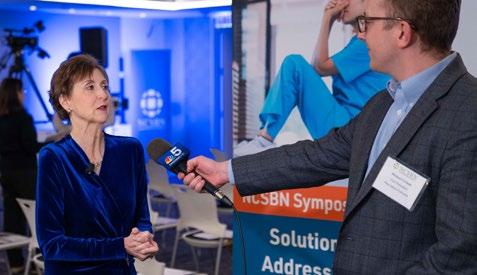


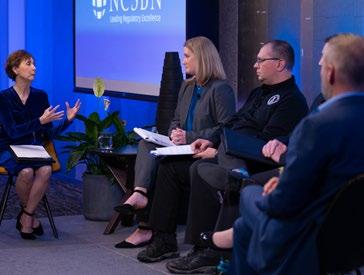
Solutions Addressing Nursing Workforce Crisis
2023
NCSBN Symposium | Chicago

Watch Now

NCSBN’s live symposium on Nov. 9, 2023, brought together leading health care professionals to discuss ways to proactively address nursing staffing, wellness and workplace safety. NCSBN’s 2022 Workforce Survey revealed that the future of nursing and U.S. health care is at an urgent crossroads and has motivated health care systems, policymakers, regulators and academic leaders to work together to enact solutions. Watch the Recordings at ncsbn.org/live
continued from page 19
WELLNESS SOLUTIONS:
Recognize early signs of burnout, discuss wellness among colleagues to reduce stigma.
— Victoria Priola, PsyD, Psychologist/Practitioner at Powers Wellness & Consulting Group
Create a wellness standard between nurses and their shift leaders.
— Debbie Dawson Hatmaker, PhD, RN, FAAN, Chief Nursing Officer at the American Nurses Association
Establish a 24/7 nurse wellness call-in line with an on-call social worker available at all times.
— Evelyn (Eve) Poczatek, MBA, Director of Strategic Initiatives at RUSH | Rush Wellness
Provide newly hired nurses with robust mentoring and transition to practice programs, where they have access to senior nurse skills training, mentorship and self-care routines, including yoga, mindfulness sessions and general processing.
— Evelyn (Eve) Poczatek, MBA, Director of Strategic Initiatives at RUSH | Rush Wellness
Integrate a robust mental health program into a provider’s health care plan, and route nurses to wellness programs and clinical support
— Victoria Priola, PsyD, Psychologist/Practitioner at Powers Wellness & Consulting Group
“I think that health care administrators should tap into the knowledge and insight nurses bring to health care,” remarks Priola, “Inviting nurses to have a seat at the table when policy decisions are being made and protocols are being set for patient care, is not only vital to the wellbeing of patients, it is also essential in supporting the collective mental health of the nursing staff and the organization at large. Everyone stands to gain from their wisdom, expertise, practical experience and skills. Their contribution to health of the organization as a whole will be invaluable.”
It might be said that healing the healer improves the health of the system.
To learn more about wellness solutions presented at the 2023 NCSBN Symposium, workforce solutions report online References
Davis MA, Cher BAY, Friese CR, Bynum JPW. Association of US Nurse and Physician Occupation With Risk of Suicide. JAMA Psychiatry. 2021 Apr 14;78(6):1–8. doi: 10.1001/jamapsychiatry.2021.0154.
Institute for Quality and Efficiency in Health Care Depression: What is burnout? [Updated 2020 Jun 18]. Retrieved from https://www.ncbi.nlm. nih.gov/books/NBK279286/
Olfson M, Cosgrove CM, Wall MM, Blanco C. Suicide Risks of Health Care Workers in the US. JAMA. 2023;330(12):1161–1166. doi:10.1001/jama.2023.15787

IT/OPERATIONS CONFERENCE
Every Moment Matters: Embracing Digital Transformation
May 14–15, 2024 | Salt Lake City

REGISTER TODAY
The NCSBN IT/Operations conference is an opportunity for information technology and operation management staff to come together to discuss and collaborate on technology trends and innovations leading to efficiencies in operational activities of the nursing regulatory bodies (NRBs).
DISCIPLINE CASE MANAGEMENT CONFERENCE
Navigating the Moment: Advancing Nursing Discipline in a Dynamic Regulatory Landscape
May 30–31, 2024 | Annapolis, Maryland
The NCSBN Discipline Case Management Conference illuminates strategies and procedures within regulatory proceedings and provides NCSBN members with an interactive forum to learn disciplinary best practices and effective investigative tools. REGISTER TODAY

UPCOMING EVENTS
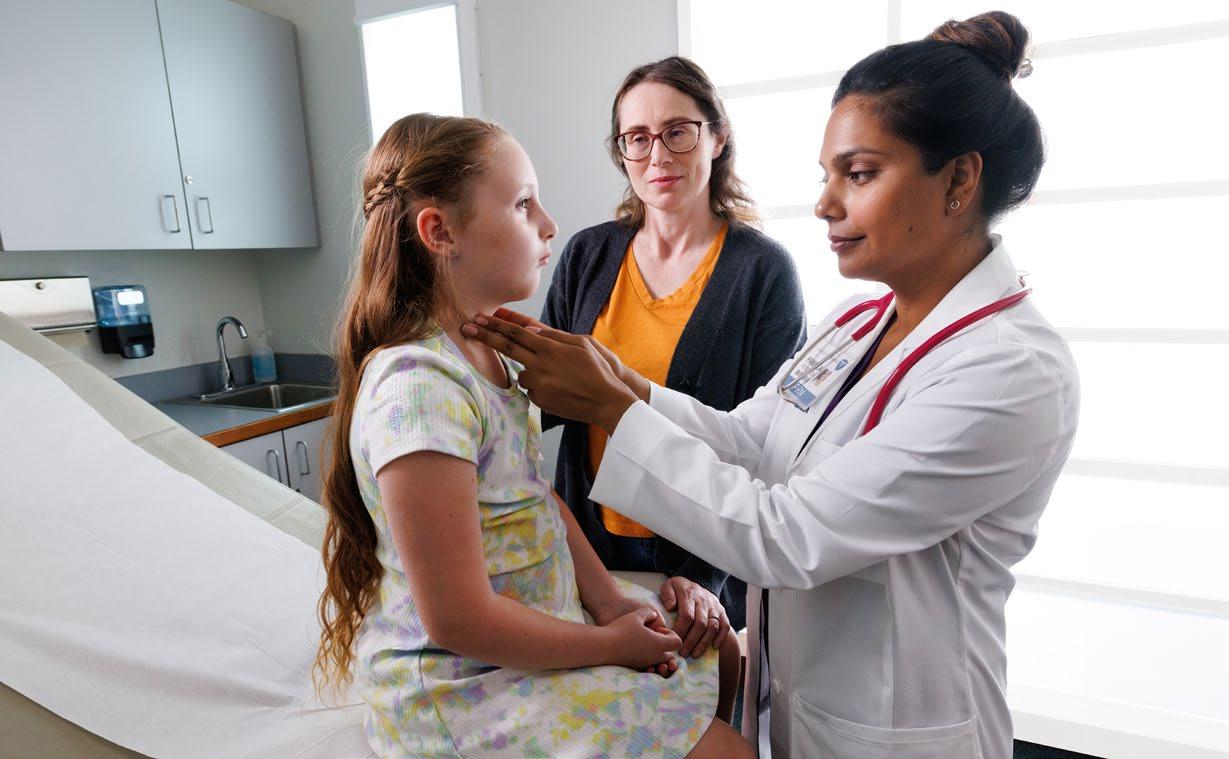

The NCSBN APRN Roundtable is an opportunity for advanced practice registered nurse (APRN) stakeholders to discuss matters of common interest which impact APRN regulation. Registration Deadline March 29, 2024
2024 APRN Roundtable April 9, 2024 • Virtual
an Impact on APRN Regulation: Every Moment Matters
Making
REGISTER TODAY UPCOMING EVENTS


Quantifying the Value of Nursing Practice
NCSBN’s Unique Nurse Identifier, the NCSBN ID, is a free, secure, turnkey solution to identifying and documenting the care provided by each nurse
In our digital health environment, nurses use a variety of technology to provide patient care in diverse care settings. Nurses leave behind an indelible digital fingerprint of their work, but data on the care they provide remain siloed, and is difficult to quantify.
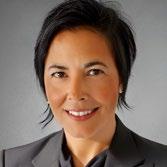
“Measuring nurses’ contribution to patient and population outcomes and delivering safe, quality and efficient care today is imperative,” says Whende M. Carroll, MSN, RN, NI-BC, FHIMSS. Carroll, a clinical informatics advisor at the Healthcare Information Management and Systems Society (HIMSS) and a Nursing Knowledge: Big Data Science initiative’s Policy and Advocacy Workgroup member, has championed adoption of a unique nurse identifier since 2017.
“This essential research will be increasingly important in our value-based care environment,” continues Carroll. “The desire to measure nurse value is accelerating, and data collection and analysis to provide robust insights into nurse contribution throughout the care continuum. Data-driven and technology-based solutions are essential for tracking and trending nurse data across job and location changes in their career journey. We must use one unique identifier effectively to advance the interoperability of technology systems to successfully capture and measure nurse movement, contribution and value in multiple settings.”
The NCSBN ID is a unique nurse identifier (UNI) that enables the measurement of nurse contributions by simplifying the difficult process of identifying each nurse and calculating the cost of nursing services provided by that nurse within a health system. Data can be tracked nationally and internationally.
continued on page 26
Carroll
continued from page 25
The NCSBN ID:
• Functions as a UNI that removes the need to use the nurse’s personally identifiable information for matching across disparate data sets and to promote data security and integrity;
• Can additionally be utilized to follow nurses throughout their academic and career journeys. Using the NCSBN ID, researchers, scholars and regulators can easily identify the nurse across disparate nurse data sets; and
• When used as the key to the primary nurse data set, can help demonstrate the value of nursing through data mining and analysis of systems like electronic health record (EHR), enterprise resource planning (ERP) and other technology systems.
Accurate tracking of nurse data has the potential to optimize care delivery and health outcomes more holistically for nurses, patients and populations.
For over a decade, all nurses have been automatically assigned a unique NCSBN ID at the time of licensure through the NCLEX exam process. NCSBN manages and maintains the integrity of the NCSBN ID issued to each nurse. The NCSBN ID is publicly available free of charge through the Nursys® system as part of the nurse license status verification. The NCSBN ID is not a system nor a database, rather it is one data element that facilitates accurate nurse search and match when made part of the nurse’s record in any nurse data set, by uniquely identifying each nurse even when there may be duplicate names, birth dates or other information.
Organizations can acquire the NCSBN ID for the nurses in their systems through Nursys online nurse lookup, file transfer or the application programming interface (API) system. This process involves searching the more than 5 million active U.S. nurses in Nursys and retrieving
the NCSBN ID of a single nurse, which then can be associated with a nurse employee within an organization to connect nurse data collected in organizational systems and processes, independent of any other system. The NCSBN ID can facilitate data retrieval through integration into the EHR system, ERP system, learning management systems and other technologies. Using the NCSBN ID as the common nurse identifier, data can be collected across systems to access data produced by individual nurses in their daily work. As more organizations incorporate the NCSBN ID into their systems, its value becomes more evident and robust.
NCSBN ID Use Cases
Current use in academic setting
The NCSBN ID can facilitate more accurate and automated updated nurse licensure information; thereby colleges of nursing can improve internal review processes involving post-licensure advanced degree students, faculty, preceptors or nurse employee compliance with requirements for nursing program accreditation.
“We have integrated the NCSBN ID into our graduate programs,” says Susan Alexander, DNP, CRNP, professor, College of Nursing, University of Alabama in Huntsville (UAH). “The NCSBN ID was added as a data point to the demographic fields in our online clinical management system for students, faculty and clinical preceptors. We update our institutional subscription to Nursys e-Notify and configure notifications on updates to licensure at the frequency we choose. The rapid and accurate results delivered to our program from e-Notify help us better understand our students’ successful completion of certification exams, along with state-level changes in licensure.”
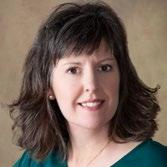
26 | In Focus
Alexander
NCSBN ID
• A number all licensed nurses have for life.
• Used exclusively for ensuring identification of licensed nurses, the only UNI specifically for nurses.
• Issued automatically by NCSBN during the NCLEX examination process and cannot be deactivated.
• Supports nurse identification across systems, helps research, facilitates tracking of outcomes and vital to nurse workforce data reconciliation.

NPI
• The NPI may be issued for any health care practitioner or organization. About 2% of nurses have an NPI.
• The primary purpose of the NPI is to facilitate financial transactions for Centers for Medicare and Medicaid Services (CMS).
• Issued by the CMS in response to an application and may be deactivated if a provider retires or is deceased.
• Supports nursing services billing and reimbursement from CMS.
The NCSBN ID (UNI) and the National Provider Identifier (NPI)
The National Provider Identifier (NPI) and the NCSBN ID have essential purposes. While both numbers identify nurses, there are differences in how the identifiers are assigned, designed and used. To support efforts to measure nursing value, the NCSBN ID can function in and across disparate systems to identify and document services and care provided by each nurse within the health system. The NPI serves as a vital link between health care providers, billing and reimbursement within the CMS framework.
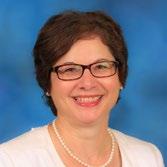
Louise O’Keefe, PhD, CRNP, CNE, FAANP, FAAOHN, associate dean of graduate programs, UAH College of Nursing, says, “As an educator and a member of the Alabama Board of Nursing, I find that the NCSBN ID helps meet the mission of academic and regulatory bodies in protecting the public by ensuring that our nursing workforce is educated and licensed.”
Future use in academic and practice setting
”If the NCSBN ID is extended to all prelicensure nursing students in the U.S., every student would have an NCSBN ID regardless of the program
they attend, even if they switch programs during their course of study or take a pause in their educational journey,” says NCSBN Chief Information Officer Nur Rajwany, MS. “At the time the graduate nurse transitions to a licensed nurse, the same NCSBN ID would remain with them. This means educators and regulators could accurately predict the future nursing workforce by tracking the movement of nursing students through their course of study until they are licensed.”

continued on page 28
2024, Vol. 1 | 27
O’Keefe Rajwany
The RN Digital Citizen Model: Integrating a unique nurse identifier into the RN Digital Citizen Model framework enhances its effectiveness and efficiency, and ensures portability, reliability and scalability for seamlessly tracking the RN’s competencies, certificates and value contributions.
Various stakeholders could accurately gauge the educational and clinical capacity of resources and adjust infrastructure with a fair amount of accuracy. “A data-driven feedback loop between nursing practice and nursing education experiences increases speed and accuracy by incorporating the NCSBN ID of their nurses in both academic and practice nurse data sets and systems,” continues Rajwany. “When exploring these future benefits, there may be many untapped potential benefits for nursing regulation.”
Use in practice settings today
Multiple pieces of technology are used during patient resuscitation, including monitors, defibrillators and data from the EHR. In a value demonstration model conducted at The Center for Medical Interoperability, a not-for-profit research and development lab, this disparate data was connected to each nurse using their NCSBN ID so
that nurse performance could easily be tracked and presented on a digital dashboard.
Kelly Aldrich, DNP, MS, RN-BC, FHIMSS, FAAN, created and led this endeavor. Aldrich, now professor and director of Informatics Innovation for the Vanderbilt School of Nursing, is a board-certified informatics nurse specialist and a recognized senior informatics leader. “One of the value demonstrations examined how a clinician — in particular the nurse — brought value to the outcome of the episode of care,” she explains. “We mocked up every medical device in the critical care environment. And the piece that was missing was, what does the person, the human, do with these medical devices? We created a digital wallet, if you will, of the person’s skills and competency-based skills, such as

28 | In Focus
continued from page 27
Aldrich
chest compressions. Could they actually deliver the right rate and depth? The use case explored how data associated with medical devices and the performance of the resuscitation team on an individual level were used for evaluating clinician performance, managing cardiac events and assessing patient outcomes.”
As data were collected, leaders were able to use dashboard information to evaluate and match nurse skill with the unique needs of each patient during patient resuscitation skills practice, using the nurse’s NCSBN ID as the common thread connecting the data for the nurse from all devices.
The RN Digital Citizen Model highlights the use of nurse data as produced by this value demonstration. Integrating a unique nurse identifier into the RN Digital Citizen framework enhances its effectiveness and efficiency, and ensures portability, reliability and scalability for seamlessly tracking the RN’s competencies, certificates and value contributions. The use of the NCSBN ID ultimately emphasizes professional evolving value and longitudinal contributions over mere repetition of competency and skills training.
“I’m a huge champion and advocate of the RN Digital Citizen Model, or the adoption of the competency-based portfolios that are anchored in the unique nurse identifier,” says Aldrich. “That’s what this captures -- the individual professional contribution, how we actually impact care outcomes via the decisions we make and actions we take. It’s really important that we measure these things, and we can’t measure it unless we associate it with a unique identifier.”
Interoperability: A Critical Purpose of Using the NCSBN ID
Measuring resources
The Commission for Nurse Reimbursement is focused on finding new methods for nursing reimbursement that acknowledge nursing
knowledge, experience, and skills that are currently documented in disparate technology systems. The interoperability between technology systems using the nurse’s NCSBN ID can provide a more reliable study of the appropriate use of nursing resources by examining the variability of direct nursing care time and costs per patient, and the relationships between patient and nurse characteristics, and nursing costs. These benefits only apply when a single, unique identifier is in use. It is important to note that using a digital identifier such as the nurse’s NCSBN ID simplifies the process for technology systems to create a marker when nurse services are administered, which later can be analyzed through data mining and data analytics technology tools. Access to all nursing data, tracked by each nurse, is the foundation for outlining future nurse reimbursement models and plans.
Data exchange
“Health care data is generated and managed within different organizations and systems, each using unique technologies,” says Brenda Kulhanek, PhD, DNP, NI-BC, NPD-BC, NE-BC, FAAN. A nurse educator who teaches in graduate programs, Kulhanek is a health care leader with substantial experience in nursing informatics, clinical education, clinical operations and clinical performance improvement. She continues, “Data standards provide a shared meaning so that information can be meaningfully exchanged between systems. The NCSBN ID is a standardized data element that allows disparate health systems to exchange information about nursing care, characteristics and services without the need to share the personal identifying information of each nurse.”

2024, Vol. 1 | 29
continued
30
on page
Kulhanek
continued
Benefits to Federal, State and Not for Profit Agencies
Different branches of the federal government have various nurse data sets. These agencies can incorporate and link the NCSBN ID with their nurse records to exchange nurse status data or nursing services data provided by nurses they employ without exposing the nurse’s personal identifiable information (PII). For example, if federal agencies incorporated the NCSBN ID of nurses in their employ and for nurses in their research data set into their technology systems by connecting with the NCSBN’s Nursys system, either through file transfer or by using the available application programming interface (APIs), then dynamic reconciliation and deduplication of various disparate nurse workforce datasets into a one large U.S. national nurse workforce information with a very high degree of precision and accuracy will then be possible in almost real time without any data security and privacy issues. Another example is allowing various stakeholders to search for a nurse within their large federal nurse data set by simply using the nurse’s NCSBN ID, thereby reducing data security and privacy concerns while increasing the accuracy of matched nurse response information.
Many not-for-profit agencies — such as Red Cross, ESAR-VHP (emergency systems for advanced registration of volunteer health professionals) and Medical Reserve Corps — can retrieve the NCSBN IDs of nurses in their data set, allowing their systems to easily exchange the availability of nurse volunteers in their regions or at the national level to help during national health emergencies as needed.
Nursing regulatory bodies (NRBs) can also benefit by incorporating and linking the NCSBN ID of nurses with the records in their jurisdictional nurse licensing systems. Searching for a nurse’s license with only the NCSBN ID returns a 100% accurate

Click the image above for an example of how the NCSBN ID makes it easy to find a nurse across three different nurse license verification systems
match response, making the verification of a nurse license easy and efficient. NRBs currently exchange academic and various nurse related information with nursing programs which can be made secure and efficient via the NCSBN ID. NRBs and hospital systems also exchange nurse relevant data at times to facilitate their operational work which also can be made efficient and secure. NRBs that have already linked the NCSBN IDs to their nurse records in their licensing systems are beginning to realize the benefits. All NRBs are encouraged to incorporate and link the NCSBN IDs to the nurse records in their licensing and enforcement systems.
The National Practitioner Data Bank (NPDB) performs a nurse discipline audit in which NPDB staff match nurse disciplinary information posted by NRBs on their websites with the nurse disciplinary information reported by the NRBs to the NPDB system per federal mandate. If the NPDB and the NRBs both incorporated the nurse’s NCSBN ID within their nurse data set and the NRBs posted the NCSBN ID with the nurse discipline record, this nurse matching process by the NPDB staff during their audit process would yield a 100% accurate result. This would potentially make the process more secure and efficient by not displaying other nurse PII.
30 | In Focus
page 29
from
Future Vision
When incorporated and linked with nurse records in national and international health care organizations nurse data sets, the NCSBN ID can provide the ability to evaluate health outcomes through the lens of nursing education level, licensure, experience and expertise.
There are many additional uses for the NCSBN ID in academia, research, regulation and government to support interoperability and fraud reduction. The NCSBN ID can enable reliable access to nursingrelevant data both within and across systems securely without the need for PII, removing the potential for bias. Aggregated nursing data is essential for identifying the contribution of nurses in a value-based health care model. Nurse staffing remains a challenge with the need to match the skills, education and experience of the nurse to the unique needs of each patient. Rajwany explains, “Leveraging the many benefits of a unique nurse identifier will produce the data required to provide a holistic view of nursing skills and knowledge that currently reside in multiple, disparate databases and systems.”
Next Steps to Operationalize and Advance Adoption of the NCSBN ID
The ongoing integration of the NCSBN ID into nurse data sets and processes of health care
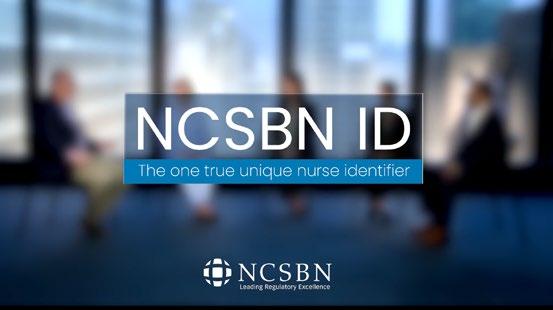
organizations, academic institutions, not-for-profit, state and federal agencies will provide the means to connect nurse-specific data without the need for the nurse’s PII. The next step in health care transformation depends on the ability to measure the contributions of nurses to health outcomes. “We must educate all stakeholders — practicing nurses, leaders, scholars, technology experts and governmental bodies — to advance the advantages of incorporating the NCSBN ID, says Nancy Beale, PhD, RN, NI-BC, FAMIA, president of Beale and Associates, a health care IT consulting firm. Beale has held various roles as an executive in health care IT and nursing. She serves as the current co-chair of the Alliance for Nursing Informatics and was past chair of the HIMSS Nursing Informatics Committee. “Today, we have a lot of different disconnected systems,” she continues. “By using the same identifier, we can facilitate interoperability and reliable connection of the data, to know that a nurse touched certain technologies while caring for the patient. It’s currently challenging to aggregate that data and see the true picture of all of the work of nursing. This is a significant opportunity. This is a call to action.”
Watch Our Panel Video


NCSBN ID: The one true unique nurse identifier
Experts interviewed for this article participated in a panel discussion about the importance of the NCSBN ID.
Beale
Your Project can Lead to Better Policy

The CRE Grant Program awards up to $300,000 for research projects that advance nursing policy and regulation.
Submission Due Dates: April 5, 2024 and Oct. 4, 2024
Funding for Your Work
More
Learn
Center for Regulatory Excellence (CRE)
Speed Round
Get to know NCSBN staff:
Zhuoran Wang, PhD, MS
Psychometrician II, Measurement and Testing, Examinations
What do you do at NCSBN?


I am a psychometrician who works on continuous enhancement and upkeep of various Examinations programs at NCSBN, including NCLEX, REx-PN, and NNAAP. My responsibilities encompass a comprehensive array of checks preemptively before and actively during the exam administration period. In addition to the day-to-day operational aspects, I conduct rigorous research to validate and support any proposed changes. These research initiatives are instrumental in shaping the future direction of our testing methodologies, aligning them with the evolving landscape of nursing education and practice.
What are the best and most challenging aspects of your job?
The best part of my job is utilizing the most up-to-date technologies and testing theories to develop and improve the exam programs we manage at NCSBN. Moreover, we are encouraged to explore other possibilities and make innovations as long as those can elevate our test quality and satisfy candidates and other stakeholders. I am enthusiastic about the cutting-edge technology that has been developed in the testing field, and I genuinely believe those have the potential to make our exam programs able to provide more accurate and informative evaluation results and minimize the fatigue as well as anxiety coming with test taking. The biggest challenge coming along is simplifying those innovative yet complicated algorithms, so they are easy and fast to apply in large-scale exam programs without compromising accuracy. This balancing act between simplicity and precision is indeed a significant hurdle, yet one that I am undoubtedly committed to overcoming to maximize the effectiveness of the exams.
If you weren’t working at NCSBN, what would your dream job be?
I love skiing. One of the reasons that I joined NCSBN and moved to Chicago was so that I could indulge in ample skiing opportunities during the long and cold winters. If I weren’t working at NCSBN, being a ski coach would be a dream come true for me. With the adaptive testing mindset we used in NCLEX, I would develop an adaptive coaching system that is tailored to cater to learners with diverse skill levels and learning styles. This innovative approach would ensure that each individual receives personalized coaching routes that align with their unique needs and abilities.


An Exciting Opportunity for Graduate Nursing Students
NCSBN’s Regulatory Scholars Program advances the field of nursing regulation by building regulatory experts and researchers, providing high-level evidence for nursing regulatory and policy decision-making, and encouraging scholarly dialogue and publications.
The program offers the following opportunities:
CRE GRANT PROGRAM FOR DOCTORAL STUDENTS
Who: PhD or DNP students who conduct research
When to Apply: The deadline dates will be announced on our website.
NCSBN’s Center for Regulatory Excellence (CRE) Grant Program will award doctoral students up to $30,000 grants (one grant each funding cycle) for scientific research projects related to nursing regulation and policy.
Interested candidates should submit an application that reflects the short/ long-term research objectives of NCSBN. The call for proposals will be sent out biannually in April and October. Grantees will have two years to complete the study. It is expected that all study results will be published and presented to national and international audiences.
SCHOLAR IN RESIDENCE
Who: DNP or PhD students, or faculty
When to Apply: Applications are accepted on an ongoing basis.
Consists of an eight-week, full-time, paid internship that will provide the scholar with valuable nursing regulatory experience related to education, practice, licensure, policy and/or discipline depending on the scholar’s primary area of interest and NCSBN’s organizational objectives. The scholar will work under the close guidance of the NCSBN director of Nursing Education and will work with specific staff based on their areas of interest. The position timeline will accommodate the scholar’s academic schedule.
A $7,000 stipend will be provided to the scholar, as well as reimbursement for travel expenses. The position will begin in the summer, or as negotiated.
UNPAID GRADUATE INTERNSHIP
Who: Masters or DNP students
When to Apply: Applications are accepted on an ongoing basis.
Unpaid practical experience in nursing regulation or policy will be offered to a limited number of nursing graduate students who want to gain nursing regulatory/policy experience to satisfy the clinical experience component of their graduate nursing program. The student will work with a variety of NCSBN departments and may choose to work intensely in one area. The student will contribute to the work of NCSBN while obtaining practical experience in nursing regulation.
The duration of the practical experience will be negotiated on a case-by-case basis, though it generally will be no longer than three months.
Now Accepting Applications
ncsbn.org/regulatoryscholars

SAVE THE DATE













 By Cindy Smith, MN, RN, Executive Director, College of Registered Nurses of Saskatchewan
By Cindy Smith, MN, RN, Executive Director, College of Registered Nurses of Saskatchewan

























































